
So, inspired by another video from Nick, I set off to find St John the Divine church in Holme Chapel, situated in the Cliviger Gorge: https://www.youtube.com/watch?v=m4Zln5clYTg&list=WL&index=54&t=1968s
This was to be my third trip exploring the valley and on a previous bus ride I’d noticed a pub at Holme Chapel with tables set out at the rear giving great views of the opposite side of the valley, so I planned to have lunch there with Jane and then we’d see what there was to see at the chapel itself. There’s no actual village of Cliviger – it’s the name given to the collection of 5 villages that constitute the parish of Cliviger.
In 1588, the queen Elizabeth I gave to her principal surgeon, Robert Balthrope, a coal mine in Cliviger. This was later transferred toJohn Towneley of Towneley Hall. TLimestone was mined at Shedden Clough in the 17th century and lead mining was attempted at Thieveley in the early 17th and mid 18th centuries. Also near Pot Oven Farm, there are the remains of a blast furnace constructed around 1700 for the Spencer partnership. I seem to remember learning about blast furnaces in science lessons at school! Although it had become a pottery by 1760, it is thought to be the first blast furnace built in Lancashire. During the mid-18th century, Cliviger produced worsted woollen pieces for the neighbouring town of Burnley. Open cast coal mining took place in the 1940s and 50s above Thieveley Scout and on Deerplay Moor.
I’d read that close to the pub and chapel was Holme House which had once been the home of a man who had written a famous history of Whalley and he’d enlisted the artistic talents of one J. W. Turner to illustrate it. Wow! Then I read that his old home had recently burned down, or a least a large wing of it had been destroyed. When I mentioned the fire Jane immediately knew which house it was and we turned off onto a short drive and there was the old manor house, now fully functional, and converted into flats. It’s still an imposing building but looks rather new. Holme Hall dates back to 1340 when Richard de Whitacre arrived in Cliviger from High Whiteacre (Padiham). In 1431, The Holme, then a manor house of 40 rooms, was referenced in connection with Thomas Whitaker. The process of converting the original wooden structure into stone began in 1603 and was completed 1717 with west wing. The Whitakers built an extension to the rear in 1854. The land once belonged to the Tattersall family and housed a chapel which lent its name to the neighbouring village of Holme Chapel.
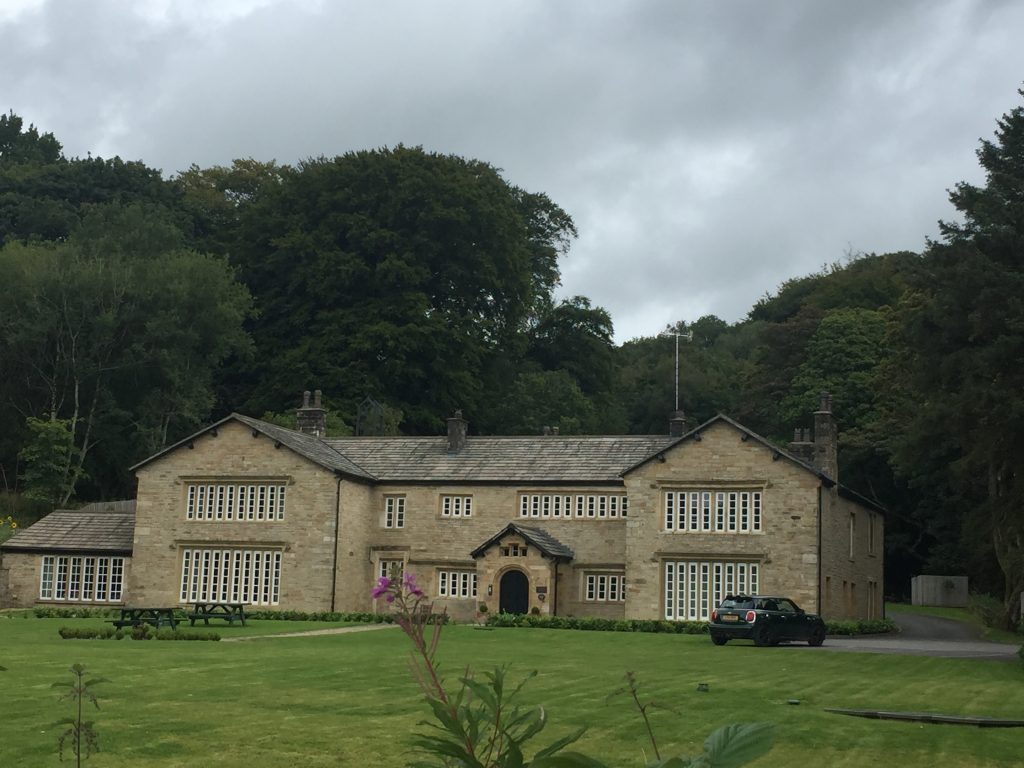
And then I discovered something so unexpected it stopped me in my tracks. Rev Alexander Whitaker, 1576-1617 sailed with Sir John Dale in 1611 to the colony of Virginia in Chesapeake Bay, becoming known as The Apostle of Virgina. My goodness. From here to the U.S (or at least what would eventually become the U. S.) in 1611!!! 2 years later Pocahontas, the daughter of the native American chief, was captured and placed under Whitaker’s care where he was taught English and the Christian religion. She was given the honorary title ‘Princess’ and it is generally believed that this minister from Holme House officiated at her baptism and eventual marriage to John Rolfe, the founder of the Virginian Tobacco Industry. Little did I think that there would be any connection to the U.S on my visit to this little village today. My daughters learned the story of Pocahontas in their American history lessons, but I certainly had never heard of her until then. Whitaker drowned while crossing the James River in 1616.
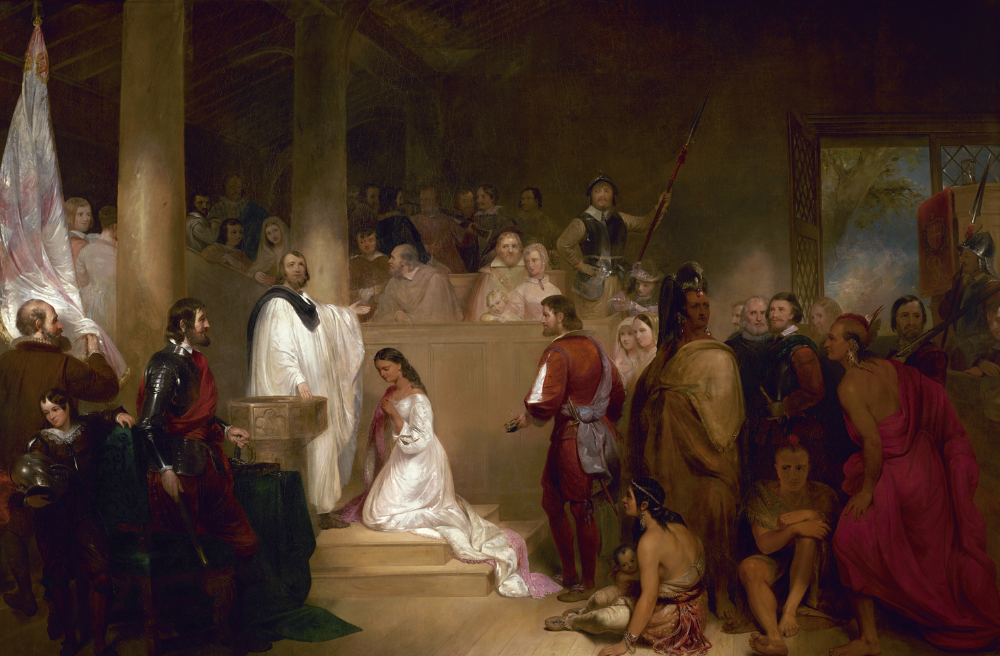
Baptism of Pocahontas by John Gadsby Chapman, 1840 with Whitaker in white 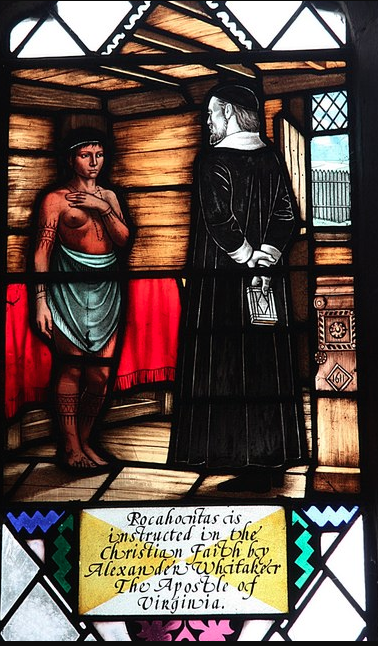
Stained glass but I don’t know which church this is.
Then it was over the road for lunch in the lovely gardens of the ancient Ram Inn. Like Holme House it’s a Grade II building. It has a lovely stone roof and mullioned windows and a mounting block for getting on your horse.
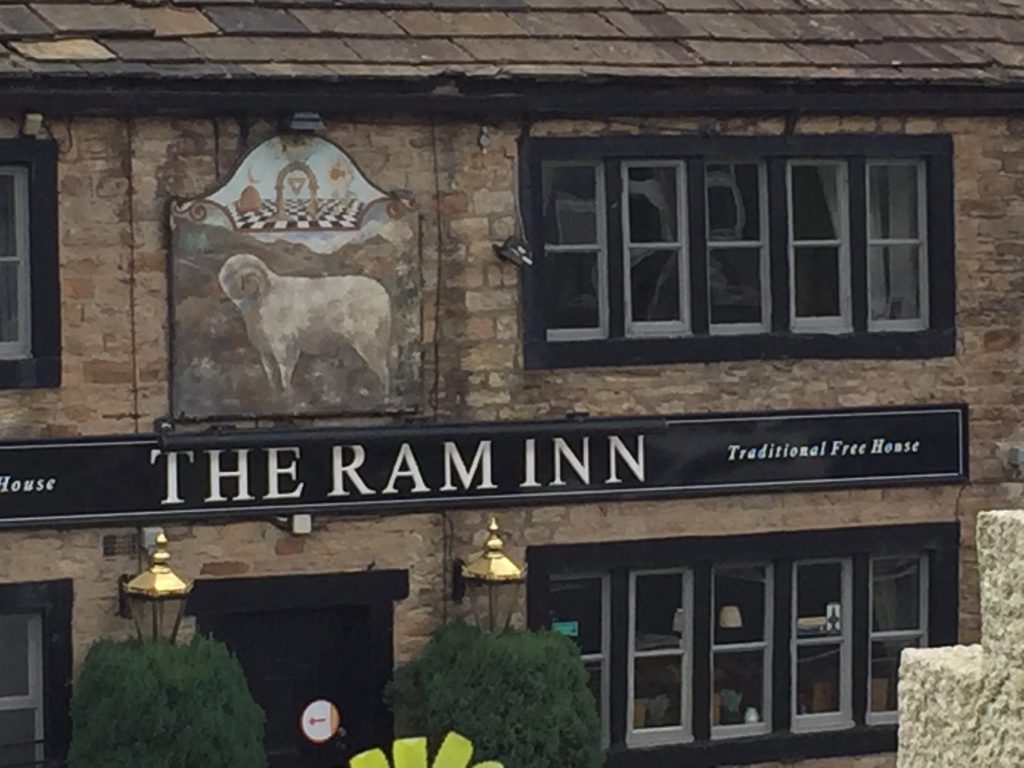
We enjoyed our lunch, going with the traditional sausage and mash – excellent.
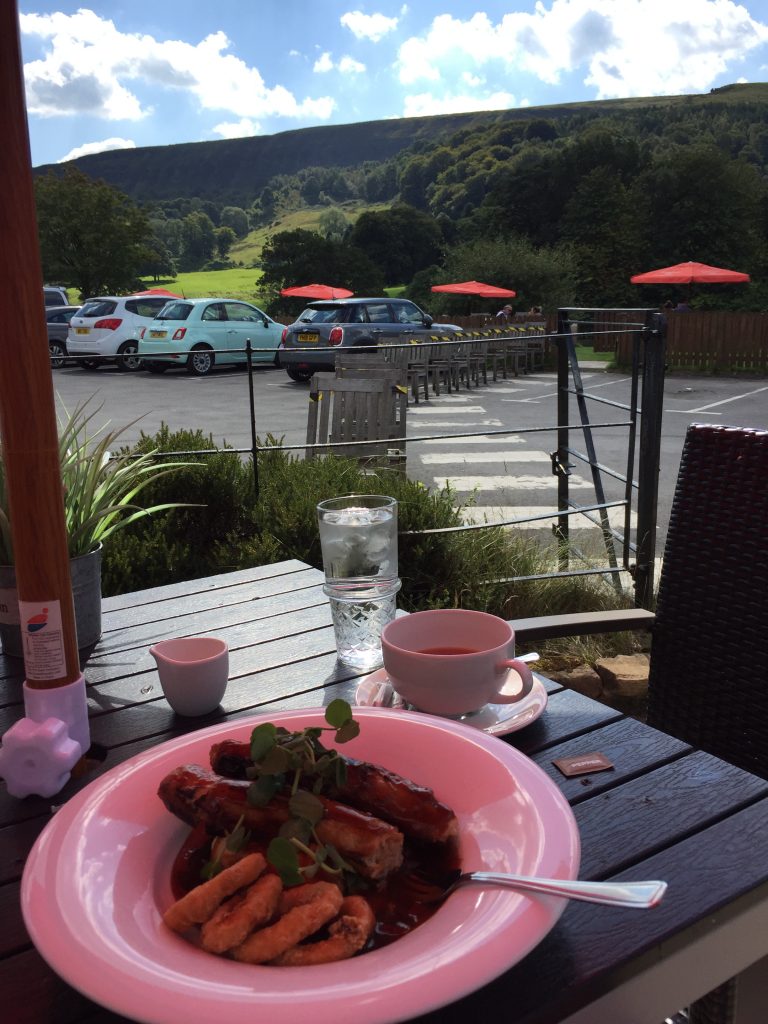
Then it was merely a few steps across the main road leading to Burnley and we were at the lychgate leading to the church St John the Divine. Besides the church being unusual for a small rural parish being constructed in the Classical style I had wanted to take photos of it for a specific reason. I’m currently taking an online art class in architectural drawing and I thought that church would give me a good subject to work from. Yet another Grade ll listed building it was built between 1788 and 1794, replacing a small chapel, and is in simple Classical style.
Above the west front is a bell turret with an octagonal cupola, and inside the church are carved oak stalls, moved from a demolished church, which include a poppyhead and misericords. All this talk of Grade II listed building reminds me of the house we lived in in Bedfordshire, Wet Manor in the village of Milton Ernest which was a Grade II building, built just before 1600. Not surprisingly the church wasn’t open though it is still a functioning church with regular services. But I was disappointed not to be able to walk around the exterior of the church – it was fenced off, so I contented myself by wandering round the very well maintained graveyard. I was on the lookout for the grave of Captain Scarlett, who led the Charge of the Heavy Brigade during the Crimean War. When I first heard this mentioned by Nick in his video I though it was a joke . . . I mean, everyone’s heard of the Charge of the Light Brigade, right? According to the Household Cavalry Museum’s website: In 1854, the Royals were the first British regiment to deploy abroad as part of a joint Anglo-French army that journeyed to the Crimea in support of the Ottoman Empire in its war with the Russians. The Royals achieved military success in a display of what cavalry were capable of at the Battle of Balaclava where, in the engagement known as the ‘Charge of the Heavy Brigade’, a force of 800 British cavalry, with the Royals at their heart, routed a force of 3000 Russian light horseman in an engagement that lasted barely eight minutes. Unfortunately, this triumph has been somewhat overshadowed by the disaster at the same battle which was the Charge of the Light Brigade. So how on earth did this highly decorated military gentleman come to be buried in this tiny village in Lancashire? Son of a Baron he’d been educated at Eton and Trinity College, Cambridge and in 1835 he had married Charlotte Ann Hargreaves a coal heiress from Burnley and from then on he made Burnley his home. After his military career he became a conservative member of parliament and on retirement he stood again as a member for Burnley but was narrowly defeated. When he died in 1871 and estimated 60,000 people lined the streets of Burnley for his funeral procession. There was a General Scarlett pub in Burnley named after him and in 2016 it became the Scarlett Tea Rooms. As I wandered around the tiny village it was hard to match this quiet enclave with the vigour and bravery shown by Capt. Scarlett.
Our final stop was at the Singing Ringing Tree, a panopticon overlooking the Cliviger Gorge, and with a gentle breeze blowing it sang to us. The sky had cleared of its earlier clouds and so we could see way into the distance. I think I could see Ingleborough. A diagram of the points of interest would have been very useful!
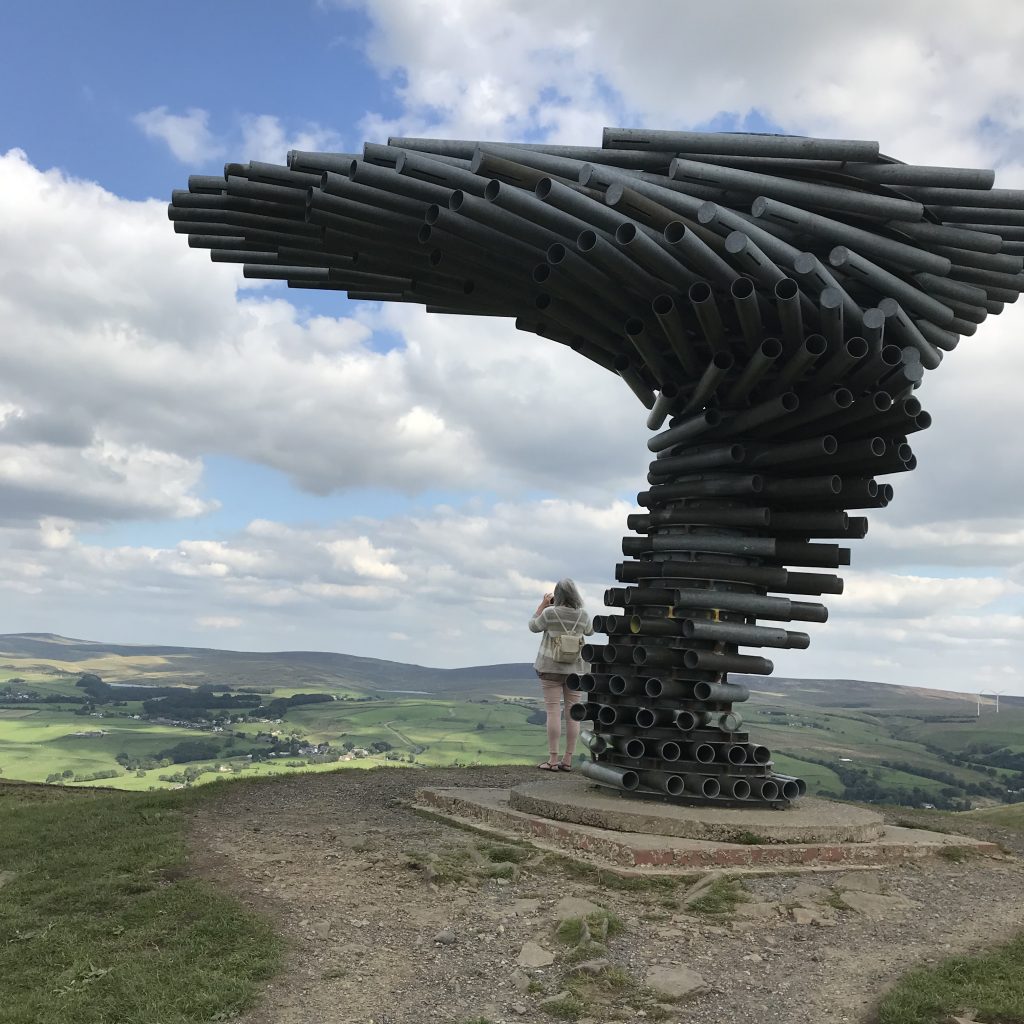
Looking forward to exploring more of the valley soon.
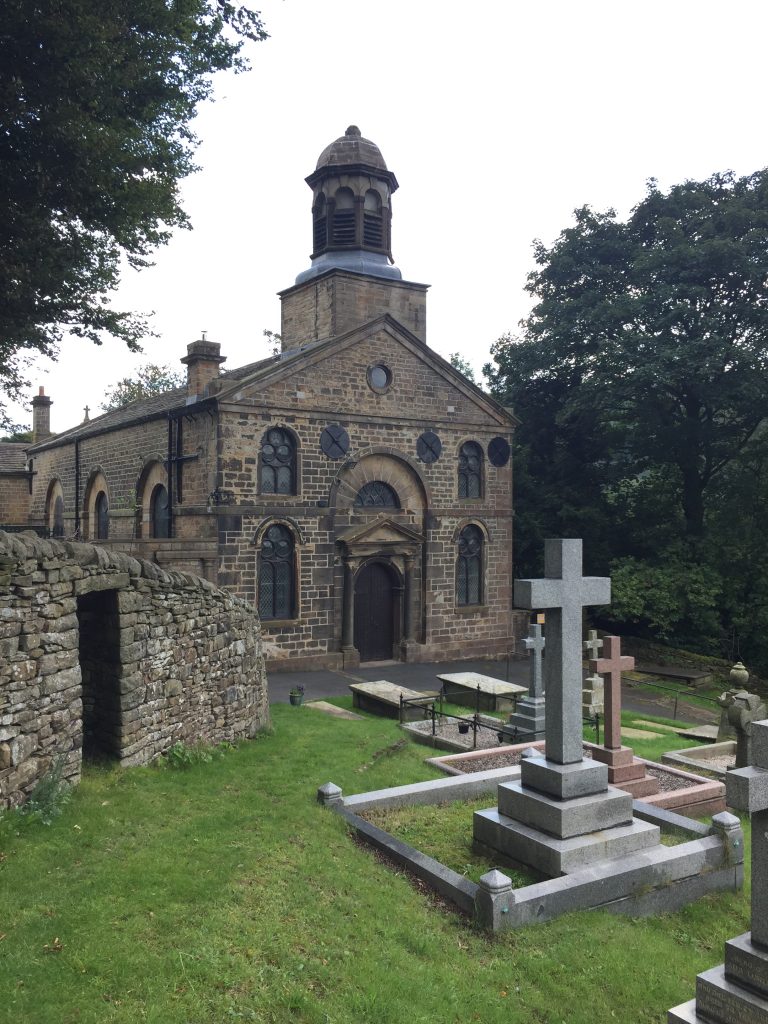
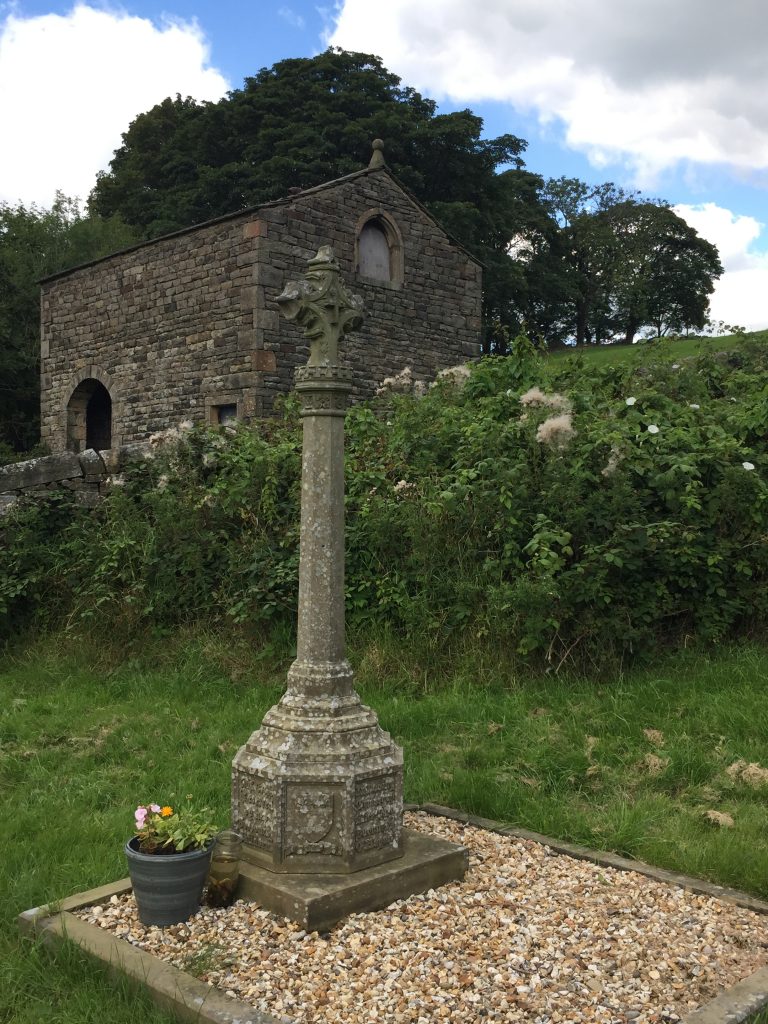




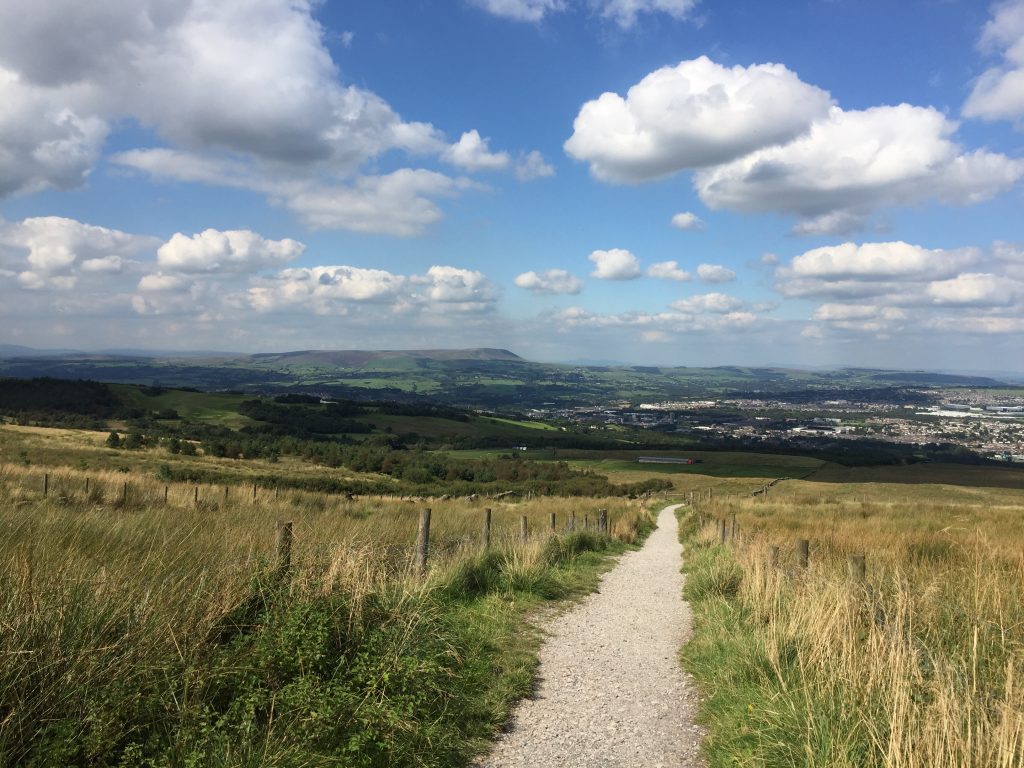
Leave a Reply